I'm assuming you're really going to keep your mouth shut on this subject.
The Political Foundations of East Timor's Conflict
By Vinay Jangid
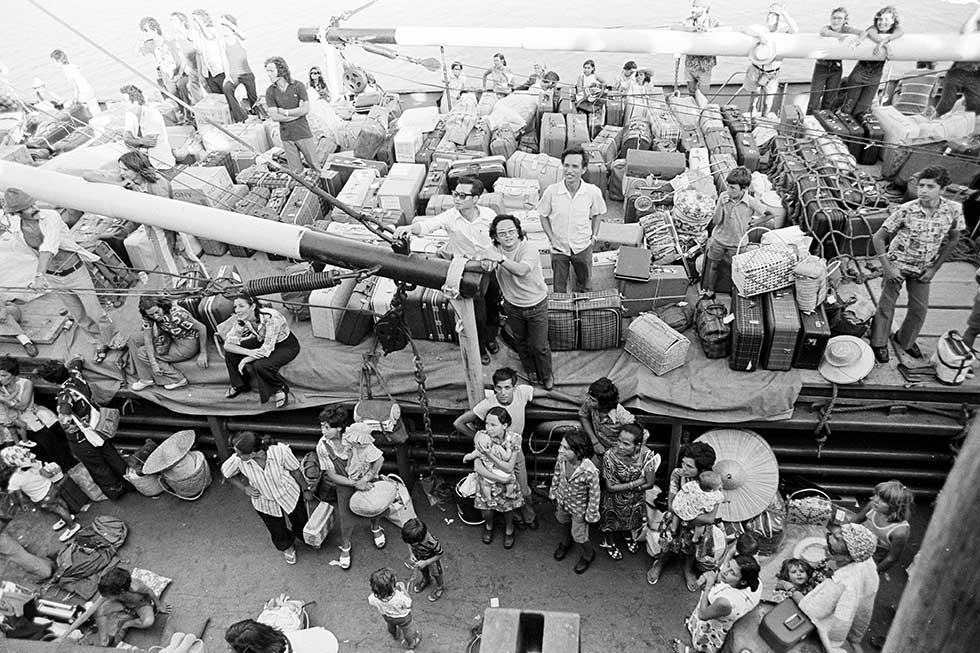
The saga of East Timor, its tumultuous history, and the geopolitical machinations surrounding its partition from Indonesia is a tale woven with threads of ambition, ideology, and the relentless pursuit of power. This narrative not only illuminates the complex dynamics of Southeast Asia but also serves as a lens through which we can examine the broader geopolitical landscape of the Cold War era. At the heart of this saga lies the Central Intelligence Agency (CIA), whose involvement in Indonesia's political affairs has often been shrouded in secrecy and intrigue.
The Seeds of Conflict: A New Nation Emerges
The roots of East Timor's struggle for independence can be traced back to the mid-20th century, a time when colonial empires were crumbling and nations were emerging from the shadows of foreign rule. Following Portugal's Carnation Revolution in April 1974, East Timor found itself in a precarious position. The revolution led to a swift withdrawal of Portuguese colonial authorities, creating a power vacuum that various factions sought to fill. Among these factions were the Revolutionary Front for an Independent East Timor (Fretilin), which advocated for independence, and other groups like the Timorese Democratic Union (UDT) that either supported integration with Indonesia or sought a more moderate approach.
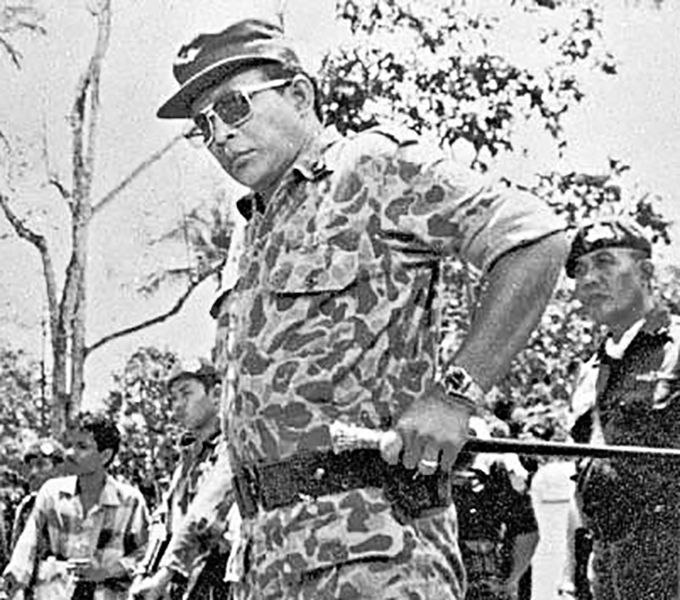
As the political landscape shifted, tensions escalated. The fear of a leftist regime taking root in East Timor was palpable, particularly for neighboring Indonesia. President Suharto, who had risen to power in 1967 following a bloody purge of communists, viewed Fretilin's rise as a direct threat to his regime and to regional stability. The specter of communism loomed large over Southeast Asia during this period, with the United States deeply invested in preventing its spread.
The Role of the CIA: A Shadowy Influence
In this charged atmosphere, the CIA emerged as a key player. The agency had been involved in various covert operations around the globe, often supporting regimes that aligned with U.S. interests. In Indonesia, Suharto's government was seen as a bulwark against communism, making it an attractive ally for American policymakers.
In December 1974—almost a year before the invasion—the Indonesian defense attaché in Washington sounded out U.S. views about an Indonesian takeover of East Timor. The Americans were tight-lipped, and in March 1975 Secretary of State Henry Kissinger approved a "policy of silence" vis-à-vis Indonesia, a policy that had been recommended by Ambassador to Indonesia David Newsom. The administration worried about the potential impact on U.S.–Indonesian relations if Congress reacted strongly against an invasion.
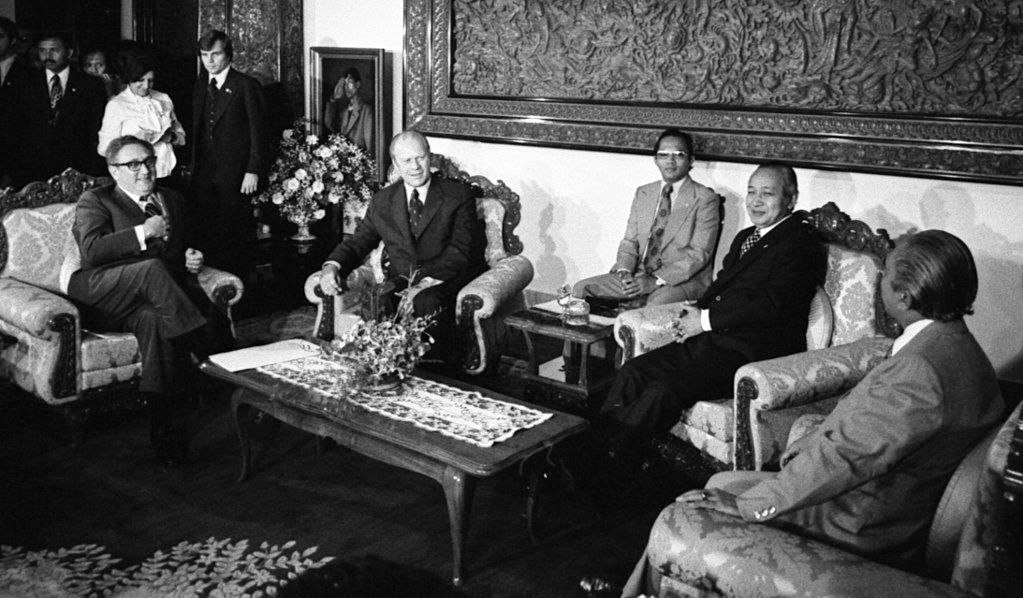
On October 8, 1975, Assistant Secretary of State Philip Habib informed meeting participants that "it looks like the Indonesians have begun the attack on Timor." Kissinger’s response was chillingly pragmatic: "I'm assuming you're really going to keep your mouth shut on this subject."
A Calculated Invasion
On December 7, 1975—just hours after Ford and Kissinger left Jakarta following their meeting with Suharto—Indonesian forces invaded East Timor under the pretext of "restoring order." This operation was swift and brutal; within days, Indonesian troops had captured Dili, the capital city. The invasion was marked by widespread atrocities—mass killings, forced relocations, and systematic repression became hallmarks of Indonesian rule over East Timor.
The U.S. response was muted at best. While human rights organizations decried the invasion and called for international intervention, Washington remained largely silent. Declassified documents later revealed that U.S. officials were well aware of the human rights abuses occurring during this period but chose to prioritize their strategic alliance with Suharto over moral considerations.
Military Aid and Support
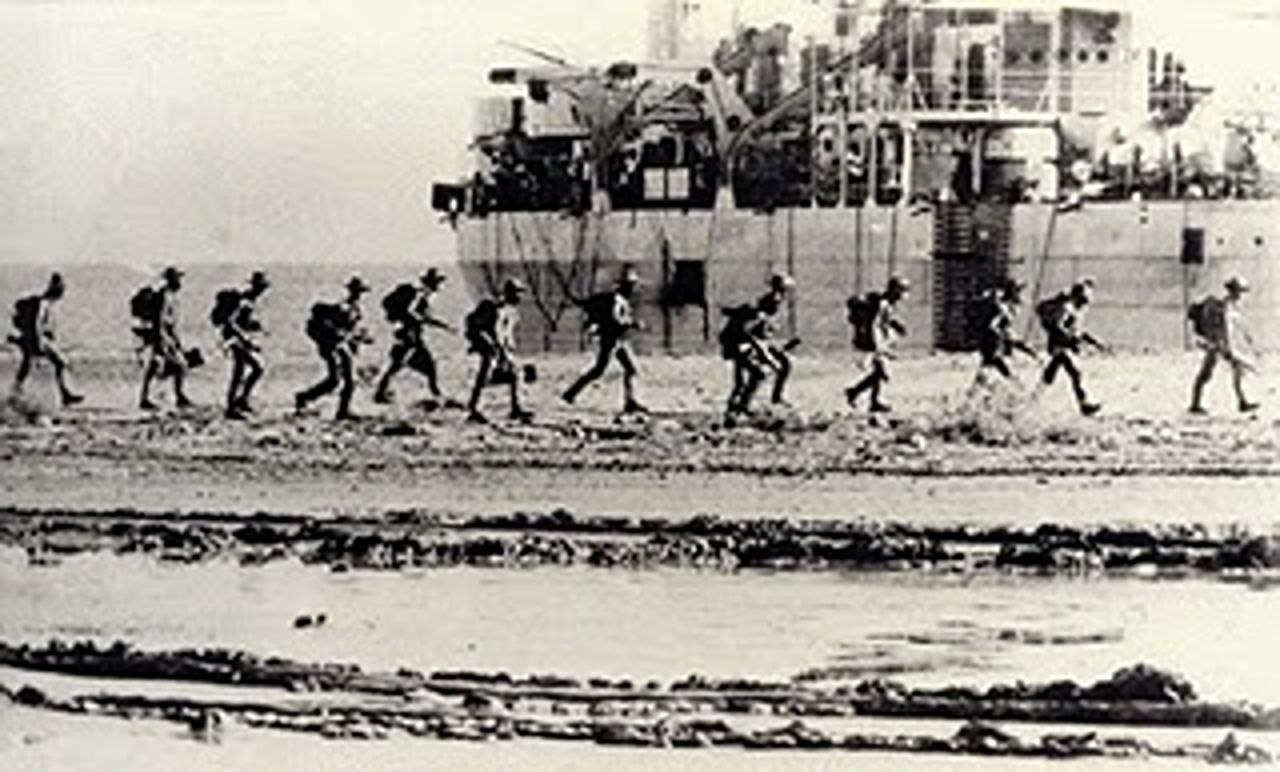
In total, between 1975 and 1979, the United States furnished over $250 million in military assistance to Indonesia. This included weapons such as M-16 rifles and OV-10 Bronco counter-insurgency aircraft—equipment that would be used against non-combatants during military operations in East Timor[1][5].
A week after the invasion began on December 7, 1975, the National Security Council prepared a detailed analysis revealing that virtually all military equipment used in the invasion was U.S.-supplied: destroyer escorts shelled East Timor as Indonesian marines disembarked from U.S.-supplied landing craft; C-47 and C-130 aircraft dropped paratroopers and strafed Dili with .50 caliber machine guns; while Indonesian airborne brigades leading assaults on Dili were "totally U.S. MAP supported," meaning they were trained using U.S. military aid[1].
Despite claims that new arms sales had been suspended from December 1975 to June 1976 due to human rights concerns, military equipment already in transit continued to flow into Indonesia during this period[2]. In fact, four new offers of arms were made during this time frame.
Atrocities in Detail: Geography and Impact
The geographical context of East Timor is crucial to understanding the scale and nature of atrocities committed during this time. Located approximately 400 miles north of Australia and bordered by the Timor Sea to its south, East Timor is characterized by rugged terrain that includes mountains and dense forests—making it challenging for resistance fighters but also providing cover for guerrilla warfare.
After Indonesia's invasion began in December 1975, estimates suggest that between 60,000 to 100,000 Timorese were killed within the first year alone due to military action[6]. By September 1979, U.S. Agency for International Development (USAID) estimated that nearly half of East Timor's population—approximately 300,000 individuals—had been uprooted and moved into camps controlled by Indonesian armed forces[6].
These camps often lacked adequate food supplies or medical care; starvation became rampant as military operations disrupted agricultural activities across rural areas. Reports from various human rights organizations documented gruesome accounts where civilians were subjected to torture or extrajudicial killings by Indonesian troops armed with American-made weapons.
The Non-Aligned Movement: A Balancing Act
Amidst these tumultuous events, Indonesia sought to position itself within the Non-Aligned Movement (NAM), a coalition aiming to navigate between competing influences during the Cold War. As one of NAM's founding members, Indonesia under Suharto attempted to assert its sovereignty while maintaining relationships with both superpowers.
This balancing act was fraught with challenges. While Suharto’s regime benefited from U.S. military aid and economic support—including substantial packages aimed at bolstering its military capabilities—it also faced growing domestic dissent and international criticism over its actions in East Timor.
Human Rights
The intricacies of U.S.-Indonesian relations during this period are often overlooked in mainstream narratives about Cold War politics. One particularly troubling aspect is how U.S. intelligence facilitated Suharto’s military operations by providing logistical support and training to Indonesian forces.
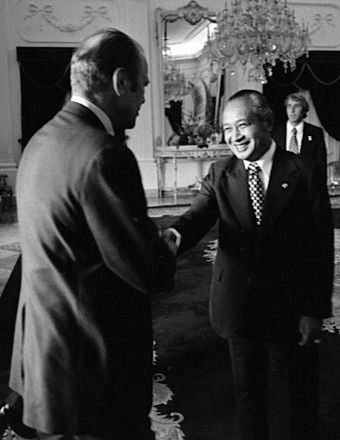
Furthermore, leaked documents from this era reveal that U.S. officials were aware that their support enabled widespread human rights violations but chose to ignore these realities in favor of maintaining strategic alliances. Reports from human rights organizations detailed gruesome accounts of massacres and displacement—estimates suggest that up to 200,000 East Timorese lost their lives during Indonesia’s occupation[5].
Congressional Response
The massacre at Santa Cruz Cemetery on November 12, 1991—where Indonesian troops armed with American-made M-16 rifles gunned down over 270 Timorese civilians—marked a turning point in U.S. policy toward Indonesia[5]. Following this tragedy, bipartisan efforts emerged within Congress advocating for active support for UN resolutions aimed at promoting self-determination for East Timor.
In October 1992—after statements by Indonesian officials indicating that such massacres were acts of policy—Congress voted to cut off International Military Education and Training (IMET) aid to Indonesia[5]. This decision faced opposition from various factions within Washington but ultimately reflected growing discontent regarding human rights abuses perpetrated by Suharto’s regime.
The Aftermath: Independence at Last
The struggle for independence continued for decades until international pressure mounted following the end of Suharto’s rule amid economic turmoil and political unrest in Indonesia during May 1998. In August 1999—under pressure from both international actors and domestic dissenters—Indonesia agreed to hold a UN-sponsored referendum on East Timor’s future.
The referendum took place on August 30, 1999; despite intense violence and intimidation from pro-Indonesian militias supported by elements within Jakarta leading up to it—approximately 78% of East Timorese voters chose independence—a decision that would ultimately lead to a UN-administered transition period.

On May 20, 2002—after years marked by conflict—East Timor officially became an independent nation known as Timor-Leste—a historic moment not only for its people but also for international norms regarding self-determination.
The Political Zeitgeist
Fast forward to today; both Indonesia and Timor-Leste navigate complex political landscapes shaped by their histories and external influences. Indonesia has emerged as one of Southeast Asia’s largest economies while grappling with issues related to democracy and human rights—a legacy still haunting its past actions in East Timor.
In contrast, Timor-Leste has faced significant challenges since gaining independence; economic development has been slow yet steady progress has been made toward building democratic institutions while fostering national identity.
Current Relations Between Indonesia and Timor-Leste
As both nations continue along their respective paths post-independence relations have evolved significantly since those tumultuous times marked by violence and repression. Today’s diplomatic ties between Jakarta (the capital city of Indonesia) and Dili (the capital city of Timor-Leste) are characterized primarily by cooperation rather than conflict—a stark contrast compared with earlier decades when tensions ran high due largely due historical grievances stemming from past atrocities committed during occupation.
However boundary issues remain—a lingering reminder that unresolved disputes can still complicate diplomatic relations even amidst newfound cooperation efforts aimed at fostering regional stability through economic partnerships focused on shared interests such as trade development initiatives benefiting both nations economically while promoting peace-building efforts among neighboring countries throughout Southeast Asia regionally speaking overall!
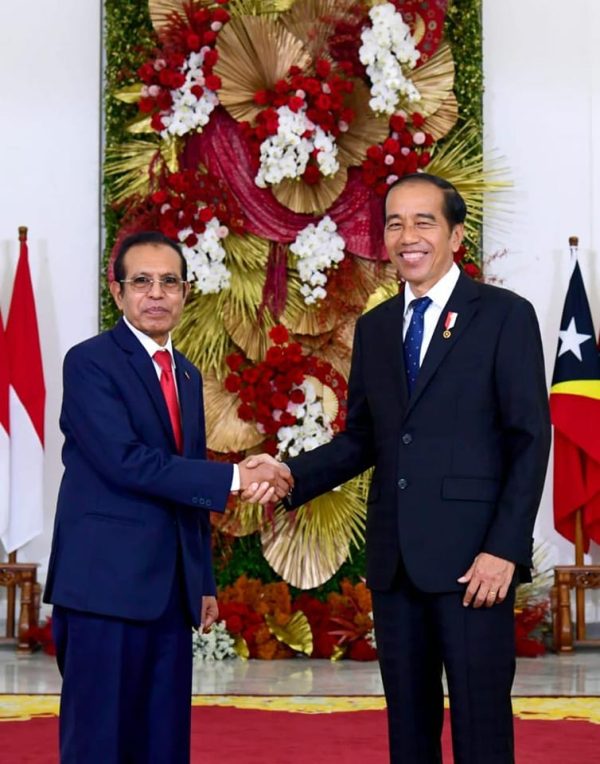
Timor-Leste’s economy today relies heavily on oil exports—which account for approximately 90% percent revenue generated annually—but faces challenges related sustainability due fluctuating global prices impacting overall economic stability long-term[3]. Additionally agriculture plays an essential role providing livelihoods many citizens living rural areas where subsistence farming remains prevalent despite ongoing efforts diversify economy beyond reliance solely fossil fuels resources alone!
Conclusion: Lessons from History
The story of East Timor’s struggle for independence is not merely a tale of conflict; it is also one that reflects broader themes within international relations—issues such as sovereignty versus interventionism; human rights versus strategic interests; national identity amidst external pressures.
As we reflect upon this historical narrative today—considering how past actions shape present realities—we are reminded that geopolitics is never static; it evolves based on decisions made by leaders who often operate behind closed doors.
Understanding these complexities allows us not only appreciate struggles faced by nations like Timor-Leste but also encourages us engage critically contemporary global issues ensuring history does not repeat itself while striving toward more just world order where every nation can chart its own course free from external interference or coercion!
Additional Links
[A] Indonesia: US Documents Released on 1965-66 Massacres
[B] Document 142-164
[C] Youtube: The chilling story of CIA sponsored ‘Jakarta Method’
[D] Background on East Timor and U.S. Policy
[E] PROBABLE DEVELOPMENTS IN INDONESIA
[F] More: Transitioning into CIA